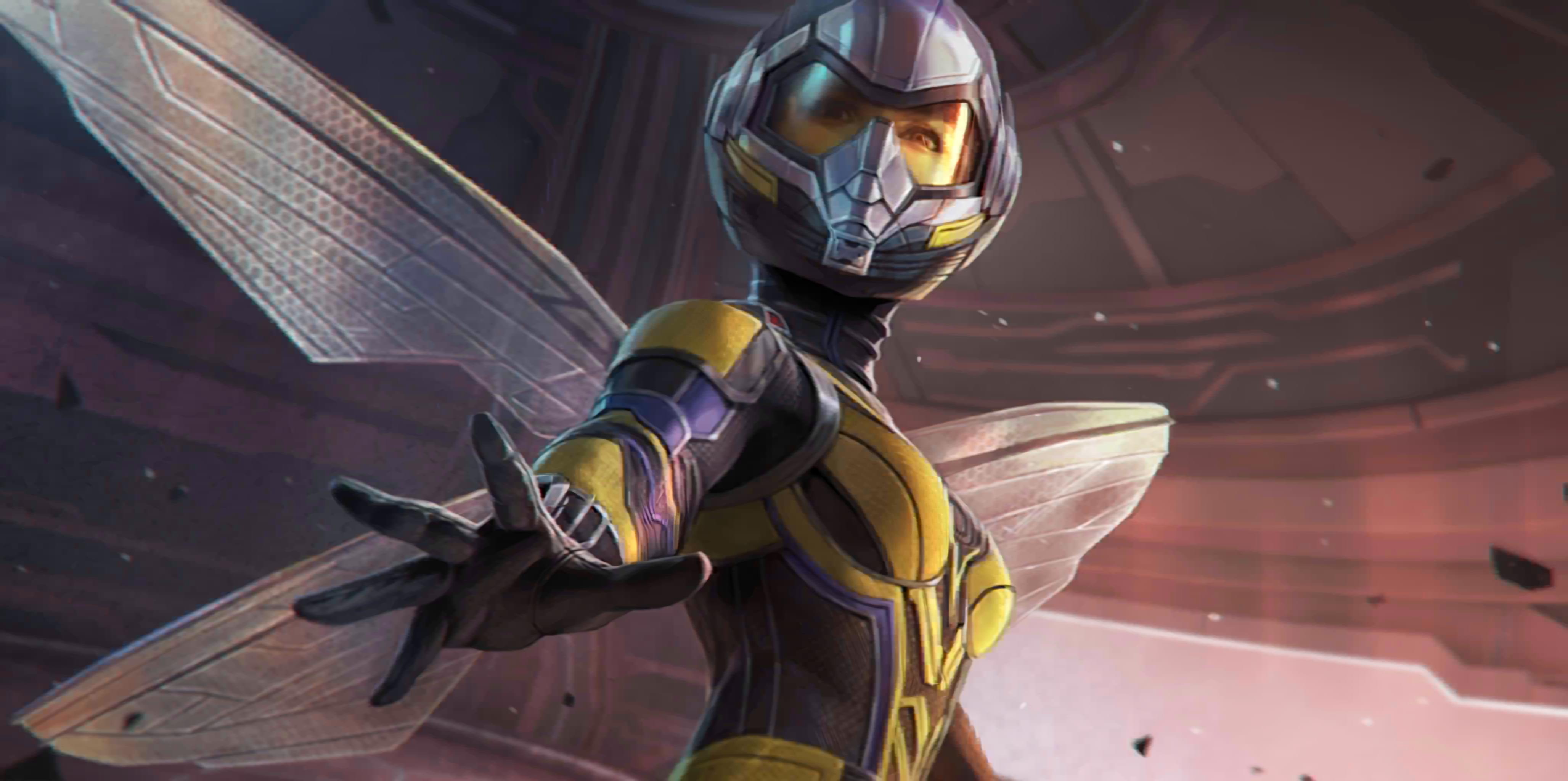
Part 5: Procs and Rotations
Introduction
Introduction
Hello agents, welcome to the THANO$VIB$ guide on proc-friendliness and skill rotations! This is probably the most important aspect of actual gameplay in the game, so it’s very important to understand properly. It’s also best demonstrated through gameplay, so this guide comes with short clips to demonstrate the mechanics. Enjoy and stay hydrated!
There is a lot of text, but just skimming through should give you a good idea of what is going on. If you can't read you can look for YouTube videos on the topic, or potentially train an AI on the text on this page and ask it questions. Endless possibilities...
This guide will not undergo frequent updates like the first 4 Beginner's Guide pages and can be considered standalone.
1. Procs
1. Procs
"Proc" is a general gaming term used to refer to random events, but in a Future Fight context, it specifically refers to the Custom Gear effect shown here.
This effect can be rolled on an Obelisk. In your Inventory, an Obelisk with a proc effect has the following yellow icon in the corner:
It is also a fixed effect on the C.T.P.s of Energy and Destruction.
A character that is “proc-friendly” is simply one that can take advantage of a proc most effectively. A character that is not proc-friendly will struggle to use one properly.
2. Proc Mechanics
2. Proc Mechanics
Let's look at what a Custom Gear proc effect does, line-by-line:
Activation Condition
The first line shows the activation condition: this means that every hit has a 10% chance of activating the proc, which is described in the lines below. Note that this is per-hit, with most skills having multiple hits. The vast majority of the time, this chance will be fixed at 10%.
*note: Brilliant C.T.P.s can exceed a 10% activation rate. Some lower grade Obelisks may have 5%.
The "Applies to: Self" part just means that the proc applies to the character in question, not the whole team.
Damage Increase
The important part is the actual effect of the damage increase. This example here shows that while the proc is active, it increases the character’s damage by 200%, for 1 attack, and lasting a maximum 5 seconds. Let's break this down further:
Firstly, the damage increase on a proc typically ranges from 120 to 200%. Note that this is a percentage multiplier, so a 100% increase is double damage, and a 200% increase is triple damage. The percentages in between should be obvious from here.
Secondly, the 1 attack and 5-second duration part. You can consider the proc as being “attached” to the skill you were using when it activates. There are two cases that can occur to deactivate the proc.
First case: if that skill ends before 5 seconds is up, the proc deactivates, and your damage returns to normal.
Second case: if the skill continues on for more than 5 more seconds, then the proc will deactivate when the 5 seconds is up.
Cooldown
Finally there’s the cooldown, which just means that the next proc can only activate 7 seconds after the previous one. At maximum, you can have your damage boosted by a proc for 5 of every 7 seconds.
Note that the cooldown starts from the proc activation, not its deactivation. So the gap between procs can be as low as 2 seconds.
3. Procs in Gameplay
3. Procs in Gameplay
Custom Gear Icon
The Custom Gear icon(s) appear first or second on the list of buffs next to your character, preceded only by the Uniform Passive icon (if the character you are using has a uniform). The icon represents body armour and lights up a Mountain Dew-ish green when active.
Sometimes there is more than 1 Custom Gear icon, which can get confusing. You can tap and hold on the icons before you start playing to figure out which one is the proc.
Proc Activation
There are two ways of figuring out when a proc has activated. You can observe both of these things in the videos below.
1. There will be text over your active character in green, saying “Activate Custom Gear Skill”. Don’t worry about not being able to read the text in time - eventually just seeing the colour of it will clue you in.
2. The Custom Gear icon will turn that same green and activate its 5-second duration countdown. While the icon is green, it means the damage boost from the proc is active. This is the main way of identifying the proc being active as it also shows the countdown.
Gameplay
Recall that procs activate and are “attached” to a skill, and there are two cases where a proc can deactivate.
First case: the proc activates during Gambit's 5th skill, but since the skill ends before 5 seconds is up, the proc deactivates early. This is what will happen with most characters.
Second case: the skill duration exceeds 5 seconds, so the proc shuts off on its own. Here we’re using Cyclops’ 5th skill, which actually runs infinitely. The proc activates on the skill and remains active until the timer counts down.
You will also notice the proc re-activated towards the end of the clip. This is because the 7 second cooldown from the initial activation ended, meaning the proc could activate again.
4. Ideal Proc Conditions
4. Ideal Proc Conditions
We now know how a proc works mechanically, and how to see one activating in-game. Now we can look at optimising a proc's usage to maximise damage. Note that there will always be a degree of randomness to this, as the proc activates on a percentage chance.
As we know that a proc is tied to a certain skill, the question is which skill to use? The main attributes to consider are the damage and number of hits.
Highest Damage
The obvious answer is the skill that deals the most damage, as it will benefit the most from the percentage increase from the proc.
Terminology: to “proc on” a skill means you want the proc to activate during it. If someone says “proc on 4”, it means you want the proc to activate during skill 4.
Number of Hits
Another factor to consider is the number of hits. Remember that there’s a 10% chance to activate the proc per-hit, so the more hits a skill has, the higher the chance of the proc activating during it. Thankfully, most characters are designed so that their highest-damaging skill deals a high number of hits, so you get the best of both worlds.
It’s also ideal for the proc to activate towards the beginning of the skill, so you “get the most” out of the proc. Say a skill has 10 hits. If it activates on the first hit, the whole skill gets boosted. If it activates halfway through the skill, only the latter half of the skill will get boosted by the proc. And if it activates on the second-last hit, only that and the final hit will get boosted.
not there yet...
You might think that proccing is simply a matter of finding a character's most powerful skill, in terms of damage dealt and number of hits. However if you think this you are wrong!
We can use other skills to increase both the damage and hit count of the skill we want to proc on. To do this, we need to understand skill cancelling and residual damage.
5. Skill Cancelling and Residual Damage
5. Skill Cancelling and Residual Damage
Skill Cancelling
In the wise words of reddit user iMuffles in his article “Jessica Jones Character Review”, posted on January 8th of 2016, skills “can be interrupted midway through if you tap another skill (might take a couple taps)”.
You can stop the animation of one skill and “cancel” it into another skill if you want. The video above shows it being done randomly, but there are proper gameplay reasons for doing this:
1. An obvious reason to do this is if a skill’s damage is lacklustre, but it applies useful buffs immediately at the start. We don't want to waste time using a low damage skill, or risk having it activate the proc - so we press it and instantly cancel into a better skill that would benefit more from the buffs.
2. Another reason to do so is if the skill being cancelled deals “residual damage”. Residual damage refers to parts of a skill animation that continue playing - and dealing damage - after the skill’s animation has ended (for example, after being cancelled).
Residual Damage
Not all skills have residual damage, though the vast majority of characters released within the last few years will have at least one good residual skill. The timing for when you cancel the skill for residual damage also varies, depending on the skill. There are some you can cancel instantly, but others where you have to wait a certain amount of time first.
Let’s use Gamora’s “Guardians of the Galaxy 3” uniform as an example. Her third skill starts by throwing out spinning blades, which keep damaging enemies as she jumps up and slams down. We can instantly cancel this skill - for example, into skill 5 - and these blades will still come out and deal hits residually. Note that by cancelling, we don’t get the part of skill 3 that has her jumping up and slamming down, but that’s fine since 5 does better damage.
The video below shows skill 3 used on its own, then skill 3 cancelled into skill 5.
Gamora’s fourth skill also has residual damage from the bombs she throws out at the start. However, this skill can’t be cancelled instantly - you have to wait for her to throw out the bombs before cancelling. Her 4th skill on its own:
Here, we instant cancel 4 into 5, and you’ll notice the smoke effect from the bombs exploding doesn’t show up.
But if we hit 4, wait a second, then cancel into 5, we get the bombs exploding during her 5th skill animation.
The function of residual damage is to allow the damage from multiple skills to overlap at the same time, effectively dealing the damage of multiple skills in a single skill animation. Skills that have residual damage also often apply useful buffs, so we can stack buffs as well as more hits and more damage from other skills onto a single one.
We'll tie this all back to procs in the next section, but lastly let's combine the 3 and 4 cancels for Gamora into one combo. We can delay cancel 4, instant cancel 3, and end on 5 to get two skills of residual damage:
6. Procs with Residual Damage
6. Procs with Residual Damage
All damage (including residual damage) that occurs during a proc’s activation is boosted by the proc effect: it is not exclusive to the hits dealt by that single skill. By proccing with residual damage, we get multiple advantages:
1. The increased hits from the residual damage means a proc will trigger more reliably at the beginning of the main skill.
2. The proc boosts the damage from multiple skills, stacked on top of a single skill.
Side Note
This is one reason we might proc on a skill that isn’t the highest-damaging in a skillset. If the highest-damaging skill can be residual damage, we might as well stack it on top of a less-damaging skill and have the proc increase both skills’ damage at once.
Take this Gwenpool uniform, for example. Her 4 deals more damage than 2, but it’s also instantly cancellable for residual damage (while 2 is not). So instead of just proccing on 4, we might as well do 4 and cancel into 2 (notice the score difference).
Deactivation
Despite the presence of residual damage, the proc still remains “attached” to the skill that activates it. If that skill ends, the proc will deactivate even if the residual damage is still ongoing. For this reason, the skill we proc on should be of a decent length - a skill that lasts 1 second would be wasting most of the residual damage.
The below video shows an X-23's 6th skill being cancelled into her 4th skill, which is short. Notice how the proc ends quickly while the counter is still at 4 seconds, and the residual effects are still going, simply because skill 4 ended.
Also note that a skill with a longer duration can be interrupted and end prematurely (e.g. if the enemy moves out of range, or your character is Guard Broken). Such interruptions will also end the skill animation and the proc will deactivate.
Here is our friend Cyclops again to demonstrate this!
7. Skill Rotations
7. Skill Rotations
Now that we understand cancelling and residual damage, and how they apply to procs, we can finally discuss skill rotations. These are simply collections of skill sequences that are tested to be optimal for a character, taking into account all of the previous concepts. (They are called rotations because you typically rotate through the same sequence over and over until a stage is cleared or a boss defeated. Or you are defeated.)
This means you don't have to figure out how to play each character from scratch: just look at the rotation, practice it a little to get the timing right, and you're good.
Stinky Netmarble!
Note that there is an in-game system named “skill combos” that attempts to teach you Netmarble’s own skill rotations. You are strongly advised to ignore these “combos” as they are largely inaccurate.
(While it is true they have been getting better over time, there is still no reason to use a mixed bag of rotations when better ones across the board exist. The system is really well-made and it would be an incredibly useful feature if the rotations programmed in to it were all accurate. Sadly they are not.)
THANO$VIB$ Rotations
You can find a list of skill rotations on the “Rotations” page of the website. These are compiled by the community and are generally very accurate, and certainly better than spamming skills with no proper rotation at all.
If you see a character mentioned in another part of the website, you can click on their character portrait and navigate to the “Rotations” tab to see their rotations.
You can try it below with some fan favourite characters!
If you’re a Discord user, it might be more convenient to use one of the THANO$VIB$ Discord Bots to look up rotations, using the "/character rotation" command. These pull from the same database that the website uses. The bots can be invited to any server or simply direct messaged to access their commands.
8. Reading Rotations
8. Reading Rotations
An example rotation (no particular character) may look like: 1c2c 3dc5qc4(c6)
Notation Basics
The rotations themselves can look very complicated, but they’re easy once you know what it all means. Starting off with the easy part: the numbers simply refer to the skill numbers, from 1 to 7. Spaces between the numbers don’t actually mean anything, they’re just there to make them more readable.
Then we get to the letters. There’s a full list on the “Rotations” page you can refer to, but we’ll just look at the most important ones here: “c”, meaning “cancel”; “qc”, meaning “quick cancel”; and “dc”, meaning “delayed cancel”. If any of these come after a skill number, then that skill should be cancelled into the next skill at some point.
Let's look at these in order of shortest cancel first:
Instant Cancel (c)
Starting off with the regular “cancel”: this can be taken to mean “instant cancel”. So (6c)5c3c4 here means you cancel 6 into 5 into 3 into 4 as quickly as possible. In gameplay, you should barely be able to see skills 6, 5 and 3 being used before they are cancelled.
You might instant cancel a skill for 3 reasons:
1. If the skill applies buffs at the very start, you might instantly cancel it to apply the buffs to a stronger skill.
2. If the skill has residual damage that begins immediately when the skill is activated.
3. If the first two don't apply, it may simply be to charge a character's Tier-3 or Tier-4 skill gauge faster (this is often the case with "1c2c" parts of rotations).
Quick Cancel (qc)
This means we cancel quickly, but not instantly. The timing is about half a second, but it’s hard to say exactly as it depends on your attack speed stat somewhat.
(Side Note on Attack Speed: this stat increases the speed of animations by up to 30%. Thus, a quick cancel that needs to wait 0.5 seconds would be cancellable with residual damage after 0.35 seconds with max Attack Speed.)
A great example of this is White Fox’s 4th skill with her “Lifestyle Series 2” uniform. We can see that instant cancelling it does nothing: this would be noted as 4c5. Here the proc didn't even trigger as 5 has relatively few hits.
On the other hand, 4qc5 has the orbs from the 4th skill appear and boost the damage.
Delayed Cancel (dc)
This simply means anything longer than a quick cancel. The timing here varies a lot, so there will always be text provided that tells you exactly when to delay cancel, often referencing the skill animation. These may require more practice than the others, and might make the rotation as a whole trickier to get right.
Our example, Knull, has two delayed cancels: 5 when he stabs himself, then 4 when the symbiote clouds rise, then letting 2 play out.
Proc Indication
The skill you want to proc on is indicated by the final bolded character in the sequence. So for our earlier example:
1c2c 3dc5qc4(c6)
We would proc on either 4 or 6. We bold the whole section of the rotation to make it more readable.
(If you want to put your knowledge to the test, you can look at the Gamora clip at the end of section 5 above and see if you can figure out the rotation notation. You can get the answer by clicking on her portrait and viewing the rotation tab.)
9. Missing Procs :(
9. Missing Procs :(
Proccing correctly within rotations is easily the main skill-based component of gameplay. Missing procs is simply a part of life - sometimes it's your fault, sometimes it's bad luck, sometimes the character just isn't proc-friendly.
Terminology: "missing a proc" means you did not proc on the intended skill, and the proc ended itself as you cancelled the earlier skill it activated on. The earlier skill is said to "steal the proc" (e.g. if you proc on 3 in 3dc5, you can say skill 3 stole the proc).
Indicators
The easiest way to tell if you've missed a proc is if the proc icon lights up before the skill you're trying to proc on. Then, when you press the final skill in the rotation, the proc icon will deactivate as you have switched to a new skill.
The below video shows two rotations from Captain America. On the first one, the proc lands successfully. On the second one, the proc barely misses and activates at the last second before skill 4 is used. Notice how the icon lights up for the whole skill 4 the first time, and turns grey when skill 4 is pressed the second time.
C.T.P.s complicate this as the secondary effect of the proc (e.g. Chain Hit Damage for C.T.P. of Energy) does not deactivate after 1 hit, so there is no visual indication of the proc having missed. The only indicators here would be noticing the proc activations came early, or noticing you're dealing much less damage than expected.
Below is an example of proccing on Adam's 5th skill, then cancelling into 4. Notice how the proc icon stays lit during 4 - this is because he has a C.T.P. of Energy equipped.
There are 3 main reasons for this to happen.
1 - Skill Issue
Has to be said! Some characters can be perfectly proc-friendly but with a difficult rotation that makes people think otherwise. Sometimes you may need to re-learn how to play a character to ensure you are not cancelling too early or too late.
This video shows a missed proc as a result of cancelling Jane Foster's 5th skill too late. If it had been cancelled instantly, the proc would have landed perfectly on 4, with residual from 3 and 5.
2 - Bad Luck
Some characters may have some intrinsic chance of missing a proc. For example, Iron Man's Back to Basics uniform has an unavoidable hit at the start of skill 3, although it is an instant cancel. If the proc has a 10% chance of activating, then 10% of the time you would expect the proc to trigger on skill 3 and miss.
However, note that as the number of enemies increases, you are dealing 1 hit to each enemy. If you are fighting 2 enemies, chances of missing the proc are doubled. In the video above, it was almost guaranteed to miss. Keep this in mind when using characters in modes like Alliance Battle if they have unavoidable hits before the proc skill.
3 - Not Proc Friendly
Residual damage, skill animation durations, and cancel timings are all part of the base design of characters. These aspects are set in stone by the designers at Netmarble and can't be changed (apart from altering Attack Speed, which doesn't have a huge impact). As a result, some characters are simply not as easy to use with a proc as others.
A classic example is a character who has lots of residual damage that only kicks in after several hits. One or two hits would still be considered proc-friendly, but something like 5 hits would mean a proc only lands correctly half the time, assuming you were always fighting one enemy.
Here is Scorpion's skillset, which is a mild example: there are multiple hits before his tail launches the projectile upwards, which is residual damage. If you want the residual from his 3rd skill, you also have to wait until the first hit lands before the poison arc starts dealing damage. In this video we managed to not proc on the 4th skill's initial hits, but skill 3 stole the proc before 5.
The next section covers what to do with characters who aren't very receptive to procs.
10. Unprocfriendliness
10. Unprocfriendliness
Easy (but Expensive) Way Out
Non-proc-friendly characters might be better suited for a persistent damage boost, like the ones found on the C.T.P.s of Rage or Judgement (the latter only applies for elemental damage dealers).
However, these are very rare items, and you will want to put them on your best characters if you have any.
Mini Rage Pitfall
The Mini Rage Obelisk effect is often recommended as an Obelisk alternative to a C.T.P. of Rage. It does have the same wording and is a persistent proc, so it ticks those boxes. Unfortunately, unlike the actual thing, Mini Rages Are Shit!
This is because the damage increase, while persistent, is just not comparable to the damage increase from a proc. The C.T.P. of Rage includes an "Ignore Boss Damage Decrease" buff, which makes it extremely powerful. The Mini Rage does not have this effect and the basic damage increase is also lower than the actual Rage - so it is essentially just a 75% damage boost at best. Compare this to a proc Obelisk which is a 100% damage boost at worst, and a 200% boost at best.
In most cases, it is best to make do with a proc Obelisk than to settle for a Mini Rage. The Mini Rage is only recommended for characters whose proc friendliness is an absolute zero. For example, Kingo's rotation has so many frantic cancels that a proc would barely get any uptime, so a Mini Rage is clearly better.
Making Do
For the majority of non-proc-friendly characters, you will probably end up having a proc obelisk on them anyway. There are ways to mitigate the issues causing the procs to miss:
1. Alternative Rotations: sometimes THANO$VIB$ will list "Simple Rotations" or similar, but sometimes won't. You may have to experiment yourself with replacing some delayed cancels with quick or instant cancels.
2. Align the Proc: mostly applies to Transcended characters. Sometimes you can start the first rotation by only using the skill you want to proc on (+instant cancels if there is no risk of stealing the proc), and only on subsequent rotations start adding in the quick and delayed cancels. The idea is that you align the proc with the correct skill from the start, so the proc is not even available to miss on the earlier skills.
This doesn't apply very well to Tier-3s sadly, as they have more mechanics with charging up the 6th skill and often proccing on it when available.
See this example of Iron Fist's 4th skill, which often steals the proc when used first.
However if we ignore it on the first rotation and slip it in afterwards, it will flow nicely into every next rotation (you can see the tail of the 4th skill residual right after he exits the forced sfx at the end).
3. Simply Do Not Care: sometimes it's not worth changing up the rotation. In these cases, you just play it out as normal and understand that some percentage of rotations will have a missed proc. Still going to perform better than a Mini Rage most of the time!
Notes & Closing
Notes & Closing
Notes
1. Persistent C.T.P.s might still be better for proc-friendly characters depending on their intended use. For example, Alliance Battle-oriented characters excel with Rage regardless of proc-friendliness.
2. Skill Rotations are mostly based around a 7 second cycle as per the proc cooldown. Character skills are also designed around similar timings, assuming you have 50% Skill Cooldown to cut down the 14-16 second cooldowns to 7-8 seconds. Apart from simply being able to use skills more often, this is why having capped Cooldown is so important - it allows you to align skills to procs.
3. Rage and Judgement characters also have skill rotations, but they are more focused around getting the damage to land anywhere in the 5 second timeframe rather than lining it all up on one skill.
Closing
Hi Agents, hopefully this was useful. As usual please feel free to leave any feedback in the THANO$VIB$ Discord. Have a blessed day! - xX_SaNaBaNaNa_Xx
Special Thanks: CARPONO, wanglequan, Poostab, green tea bitch, BAOPI, analpunisher, taobao & SilentRoar🐟


















